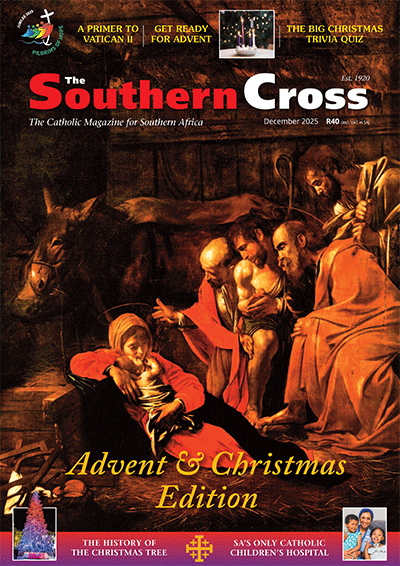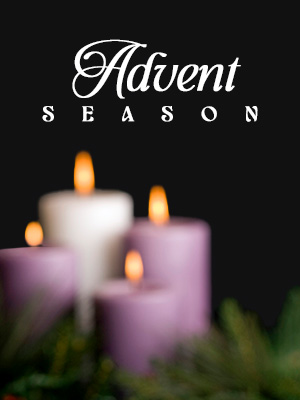The Deep Faith of Egypt’s Christians
Who are the Copts and what is Christianity like in Egypt? In the ninth part of his series on the recent Pilgrimage of the Peacemakers, Günther Simmermacher looks at the faith in Egypt.

A panoramic photo of the monastery of St Bishoy, one of Egypt’s most important Christian sites, on the edge of the Western Desert. (All photos: Günther Simmermacher)
There are very few good things to say about the likes of Saddam Hussein, Muammar Gaddafi or Bashar al-Assad — yet, Christians in Iraq, Libya and Syria have reason to look back to their dictatorships with some wistfulness.
These dictators were iniquitous, but under their rule Christians were protected. Once Saddam and Gaddafi fell, and Syria entered its long civil war, Islamic militants began the brutal persecution of Christians and other minorities.
This is why Egypt’s Christians, about 10% of the population, have been supportive of their military ruler, Abdel Fattah el-Sisi, even though he runs a repressive regime.
Discriminatory laws are still in force, but at least President Sisi offers relief from the anti-Christian pogroms that coincided with the brief rule of the Muslim Brotherhood, which was elected in June 2012 and overthrown by Sisi — with the broad support of the public — in July 2013. In that time and the troubled months after, around 40 churches were torched and another 23 attacked throughout Egypt.
For all his brazen repression, Sisi’s grip on power is weak, and Egypt’s Christians have every reason to be concerned about what kind of regime might come should Sisi fall.
The country’s Christians are known as Copts, and the Christian Church as Coptic. The term “Copts” means “Egyptians”, and the nation’s Christians see themselves as the descendants of the Pharaonic Egyptians, whereas the Muslims are from Arab descent, arriving after the Muslim conquest of 642 (of course, many Copts also converted to Islam).
The word Copts describes all of Egypt’s indigenous Christians, but most are Orthodox. The roots of Egypt’s faith go back to the earliest days of Christianity. Tradition holds that the region was evangelised by St Mark, author of the earliest gospel, at a time when Egypt was ruled by Rome.
Egyptian Christians, mostly from Alexandria, had a great influence on the early Church, especially Origen, the “Father of Theology”. The first three ecumenical councils of the Church were headed by Egyptian patriarchs, including the watershed Council of Nicaea in 325.
And the monastic life has its roots in Egypt. St Benedict was the founder of Western monasticism, with its religious orders, but that came two centuries after the first monasteries were founded in Egypt. Indeed, Benedict drew from the teachings of St Pachomius the Great, the Egyptian founder of monastic community life.
The Pilgrimage of the Peacemakers group visited two of four pioneer monasteries on the edge of the Western Desert, near the dirt-poor town of Wadi El Natrun: the St Bishoy and Virgin Mary (or Syrian) monasteries.
The monastery of St Bishoy, founded in the fourth century, is Egypt’s most important. We were welcomed to the striking complex of ancient and new buildings, all painted in the same warm tone and most featuring domed roofs, by the amiable Br Joaquin.

Br Joaquin explains the life of St Bishoy, whose tomb is behind him, at the monastery founded by the saint in the fourth century
Br Joaquin wore the traditional garb of Coptic monks — a thick, black robe and a tight, black skullcap and hood called the qalansuwa with six crosses on two halves. His white beard conveyed wisdom and authority, his eyes alertness, and his smile kindness.
He explained to us that the monastery has an age-old tradition of inviting the poor and travellers to eat with the monks. It also has a resident doctor and dispensary to treat the monks and indigent locals.
The monk took us to the monastery’s most important place: the church of St Bishoy, named after a man few people outside Egypt know but who is one of the most important Coptic saints. The church holds his tomb.
The story of St Bishoy is remarkable. Born in 320AD, he became a desert hermit at a young age, eventually settling down in a cave at what is now the Syrian monastery.
He soon became known as a man of compassion, humility and wisdom. Other hermits who came to him for spiritual direction then just stuck around, eventually becoming a community. This was the beginning of the monastery of St Bishoy.
The saintly monk also reported to have apparitions of Jesus. In one Jesus promised to appear on a mountain, to be seen by the faithful. On the appointed day, the tradition holds, the people went up the mountain to see the Lord.
Bishoy was lagging behind the crowd when he spotted an old man who was struggling to walk. Since all the pilgrims had passed the old man without offering assistance, the monk picked him up and carried him up the mountain. Progressively he felt the load getting heavier; when Bishoy could no longer continue, the man revealed himself as Christ.
Of course the people asked Bishoy why the Lord hadn’t turned up for the appointment; the monk told them that the Lord had in fact come, but that they had just passed him by. Fact or parable, the story holds an important lesson for us.
In the second apparition, a man appeared at the monastery and, as he always did when visitors came, Bishoy washed the dust off the stranger’s feet. It was then that he recognised Jesus by his crucifixion wounds.

Coptic ikons of St Bishoy
St Bishoy fled the area when the Berbers invaded it in 407. He died in exile in 417. His body was relocated to his monastery in 841.
As promised by Christ at the apparition on the mountain, St Bishoy’s body is incorrupt. Every year on his feast day, July 15, the Coptic pope leads a celebration in which St Bishoy’s body is unwrapped and scented with herbs. The previous year’s herbs are then used in prayer cards, with which Br Joaquin presented each one of us.
The Coptic Church has had a pope since apostolic times; St Mark is generally regarded as the first archbishop of Alexandria and therefore as the first pope — a title the Copts have used since 232AD, almost three centuries before it was first used by a Roman pontiff, Pope John I.
The present Coptic pope, Tawadros II, is the 118th pope. His predecessor, Pope Shenouda III, headed the Coptic Church from 1971 to 2012. The hugely popular pope lived through some tough times for Christians, especially under President Anwar al-Sadat, who banished Shenouda to the monastery of St Bishoy. He was allowed to return to Cairo only three years after Sadat’s assassination in November 1981.
A passionate ecumenist, Shenouda was the first Coptic pope to visit the Roman pope and Greek Orthodox patriarch since 451. When he died, a million mourners came to Cairo’s St Mark’s cathedral. Shenouda’s tomb is at St Bishoy monastery.
Copts frequently come together in big numbers, especially in Cairo. On some of such big gatherings, huge crowds have witnessed what have been claimed to be Marian apparitions.
On several occasions from 1968-70, crowds of hundreds of thousands, Christians and Muslims, gathered outside St Mary’s church — where tradition holds the Holy Family stayed during the Flight into Egypt — in Cairo’s Zeitoun district to witness inexplicable appearances in the sky above the church of a huge luminescence in the vague shape of a woman.
This would happen as often as two or three times a week. The Coptic Church investigated these luminous phenomena in the sky, as did the Egyptian police. Nobody could explain them. Police confirmed that no device could be found within a radius of 25km which might have had the capacity to project the image.
Of course, counter-arguments have been presented, including our old friend, the “mass delusion”, which supposedly led hundreds of thousands of people to simply imagine these inexplicable lights. But if this was so, were cameras also deluded? The abundance of photos, many held privately, rules out the possibility of manipulation.
There have been other reports of apparitions in Cairo — between 1986-91 at St Demiana church and in 2009 at the Virgin Mary and Archangel Michael church in Giza — but these are not necessarily inexplicable.
The apparitions attract not only Christians but also Muslims, who also venerate Mary. In fact, it was a Muslim who first saw the apparition of Zeitoun. It is common in Egypt to see Muslims entering a church to venerate the Blessed Virgin.
We closed our day on a thoroughly ecumenical note at Anafora, a retreat and conference centre and organic farm which sustains the small Coptic community that lives there.

The group before Mass at the Anafora retreat centre, 75km north of Cairo
Located about 75km north of Cairo, Anafora — a Coptic word meaning “offering” and “uplifting” — is an oasis of tranquillity. It welcomes people of all faiths and backgrounds to aid them in their spiritual growth, in structured retreats or by providing an environment conducive to quiet contemplation. All that with a huge T-shaped pool to cool off in.
A young, non-consecrated sister guided us through the centre, which was founded in 1998 by Coptic Orthodox Bishop Thomas. It is an impressive set-up. It is solar-powered, and candles are used instead of electricity. The food is organic, and the atmosphere is relaxed.
At first sight Anafora might be mistaken for some kind of New Age commune but for the manifestations of the profound faith that gives this place its meaning.
At its centre is the large church, where Mass is said daily. Our group had Mass there, and it was a unique experience.

The exterior of the church at Anafora.
The church has no pews in which to sit. The congregation sits on woven multi-coloured striped rugs and pillows that cover the entire space (though there are chairs for those who wish to sit). It is likely that at the Last Supper Jesus and the apostles sat on rugs much like these when the Eucharist was instituted.
After Archbishop Stephen Brislin, our spiritual director, had administered Holy Communion to us, we returned to our places to pray and give thanks on our colourful woven blankets and cushions — much as the Twelve probably did on that momentous night in the Upper Room.
Next week: The faith in Cairo. Catch up with previous articles on pilgrimages by Günther Simmermacher
Last Week: Jerusalem: The Birthplace of Our Church
Günther Simmermacher is the author of The Holy Land Trek: A Pilgrim’s Guide, published by Southern Cross Books. Join The Southern Cross on the Year of Mercy Pilgrimage to the Holy Land in October, led by Fr Larry Kaufmann CSsR. Details and illustrated itinerary
- Shrines Around the World: Our Lady of Guadalupe - December 12, 2025
- The Chosen’s Mother Mary: I loved washing Jesus’ hair - December 5, 2025
- Book Review: Benedict, Baltimore and the Barbary Pirates - December 4, 2025





